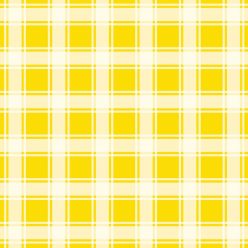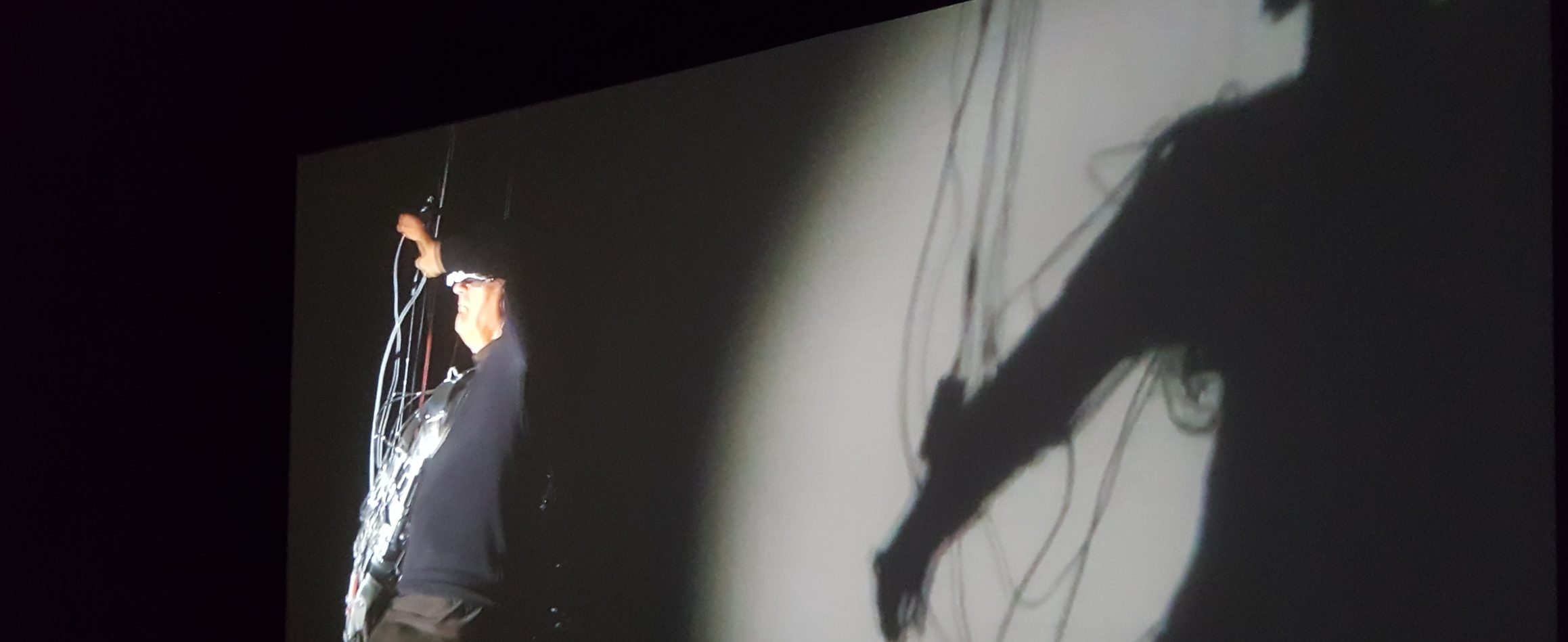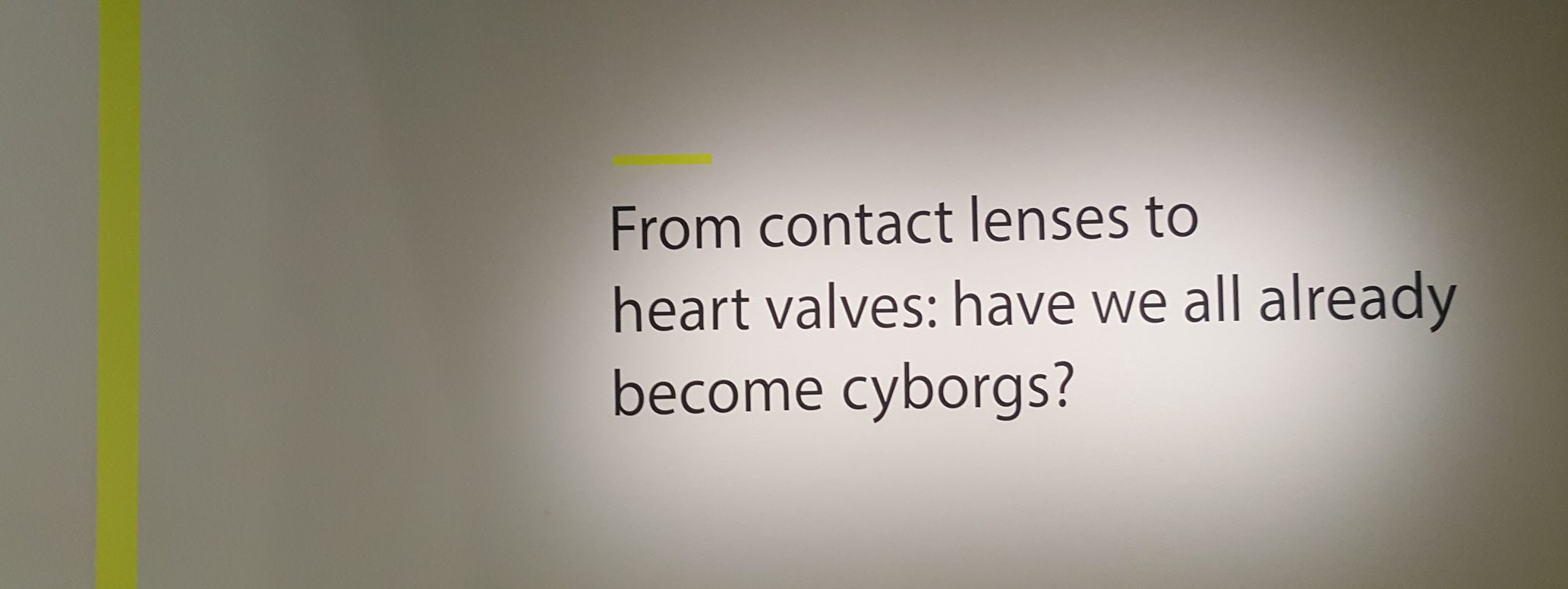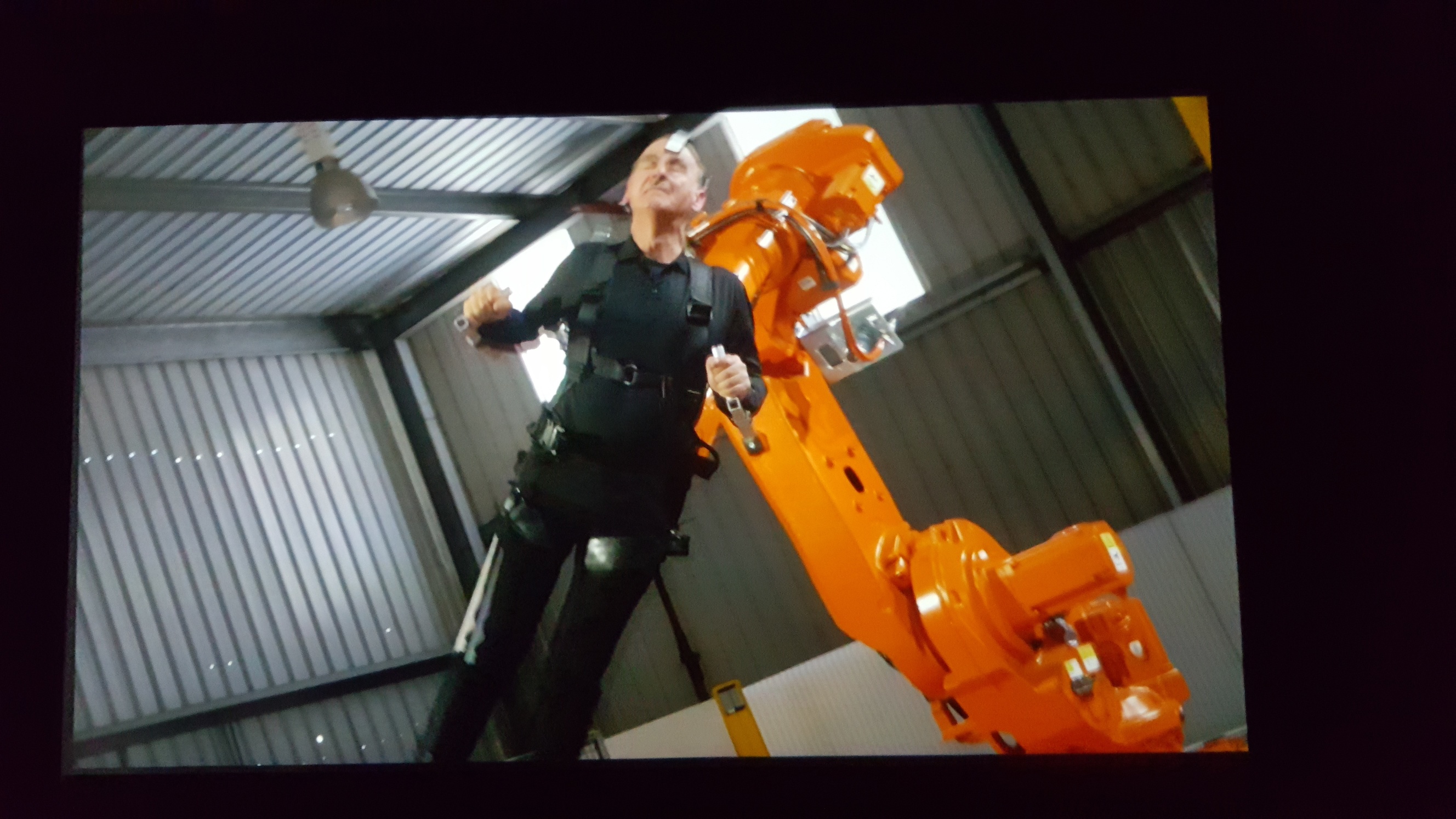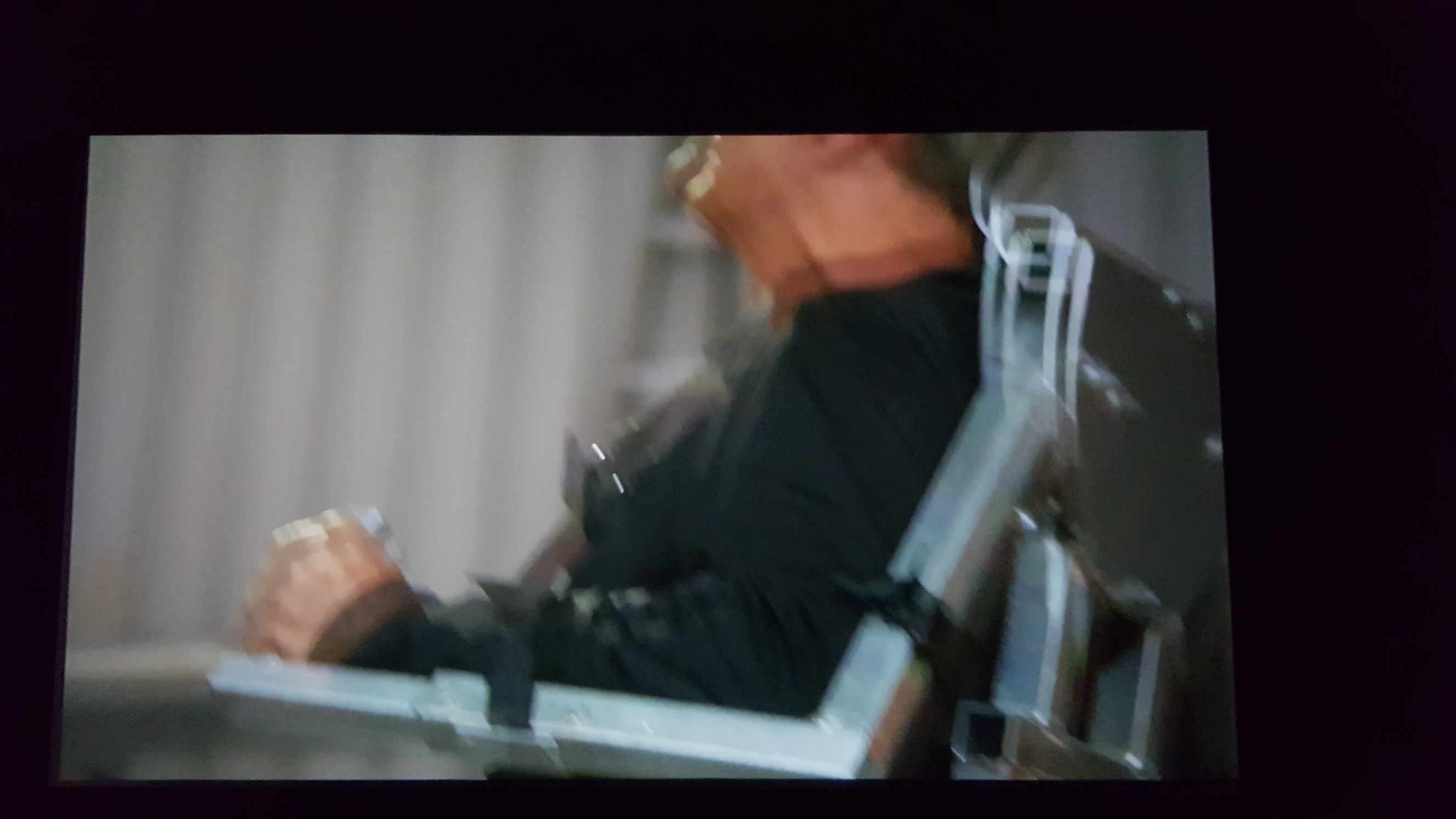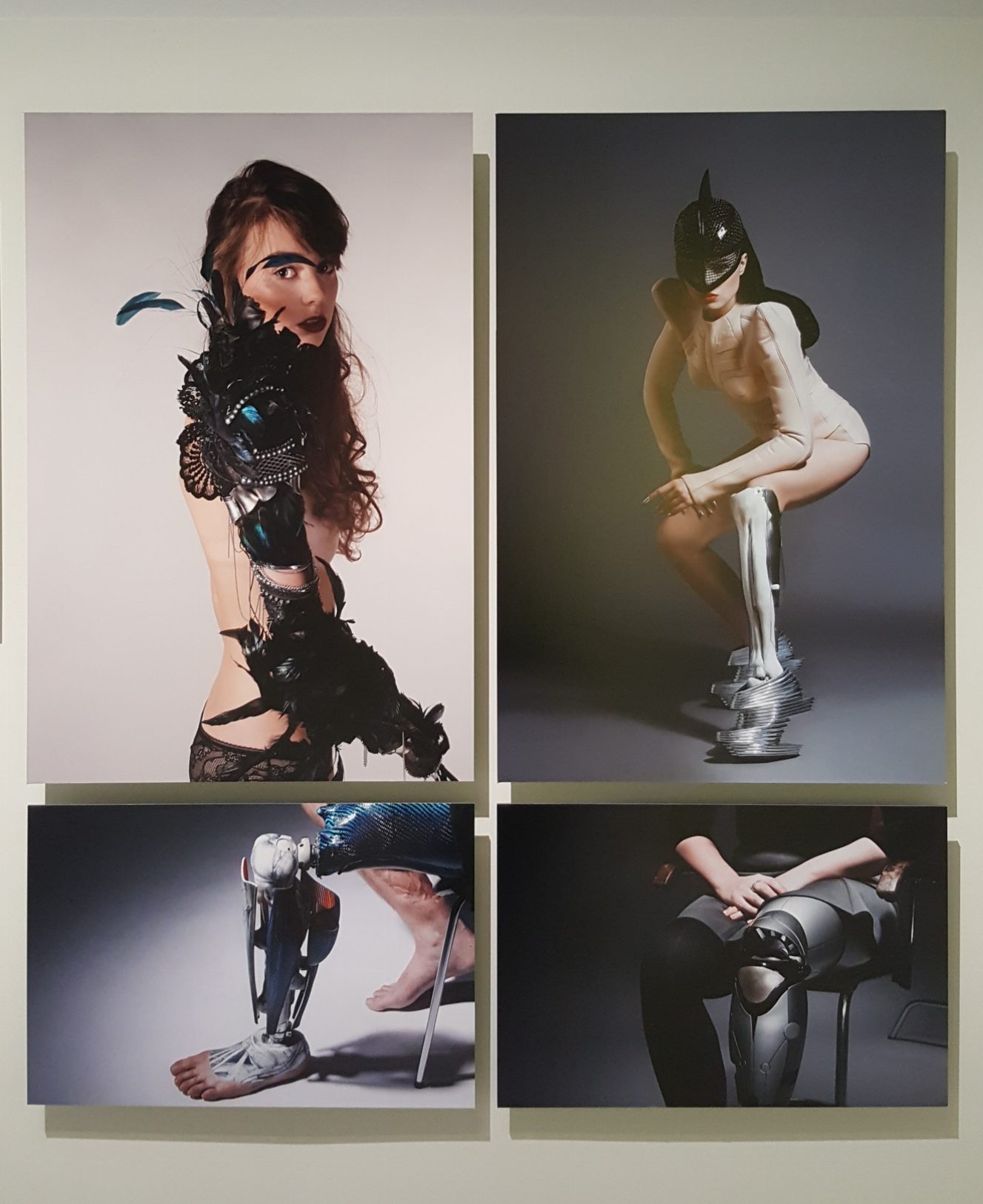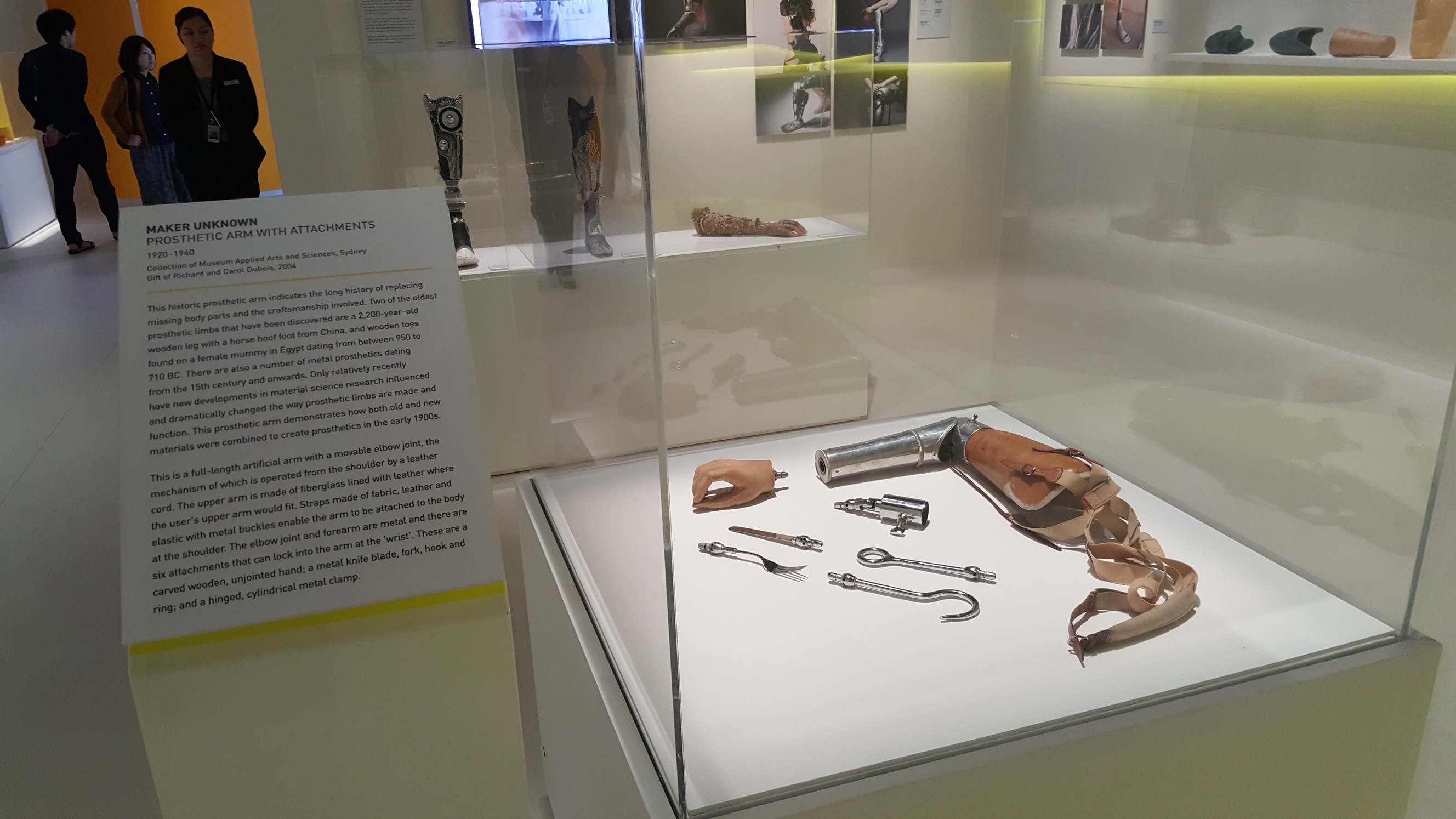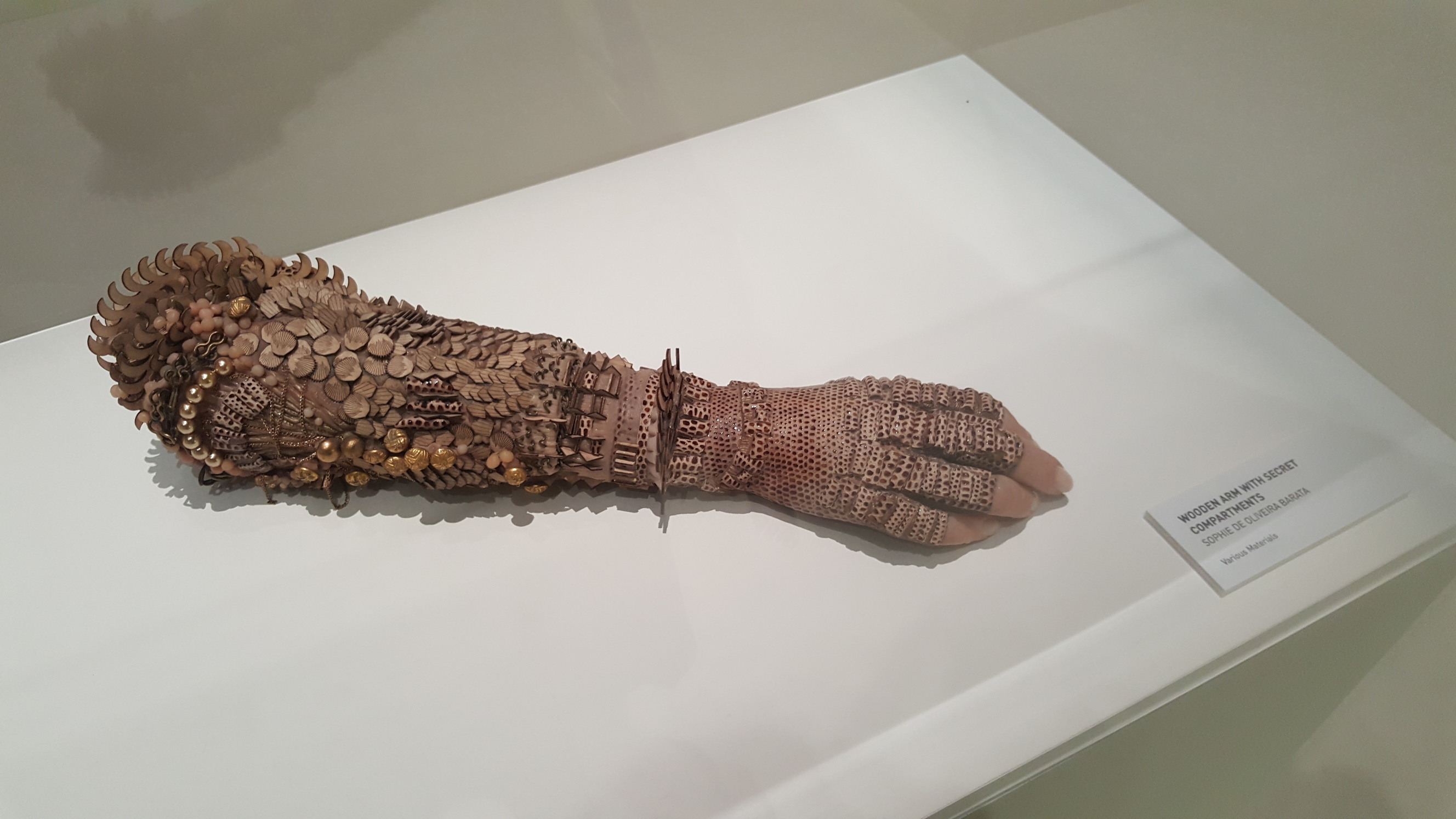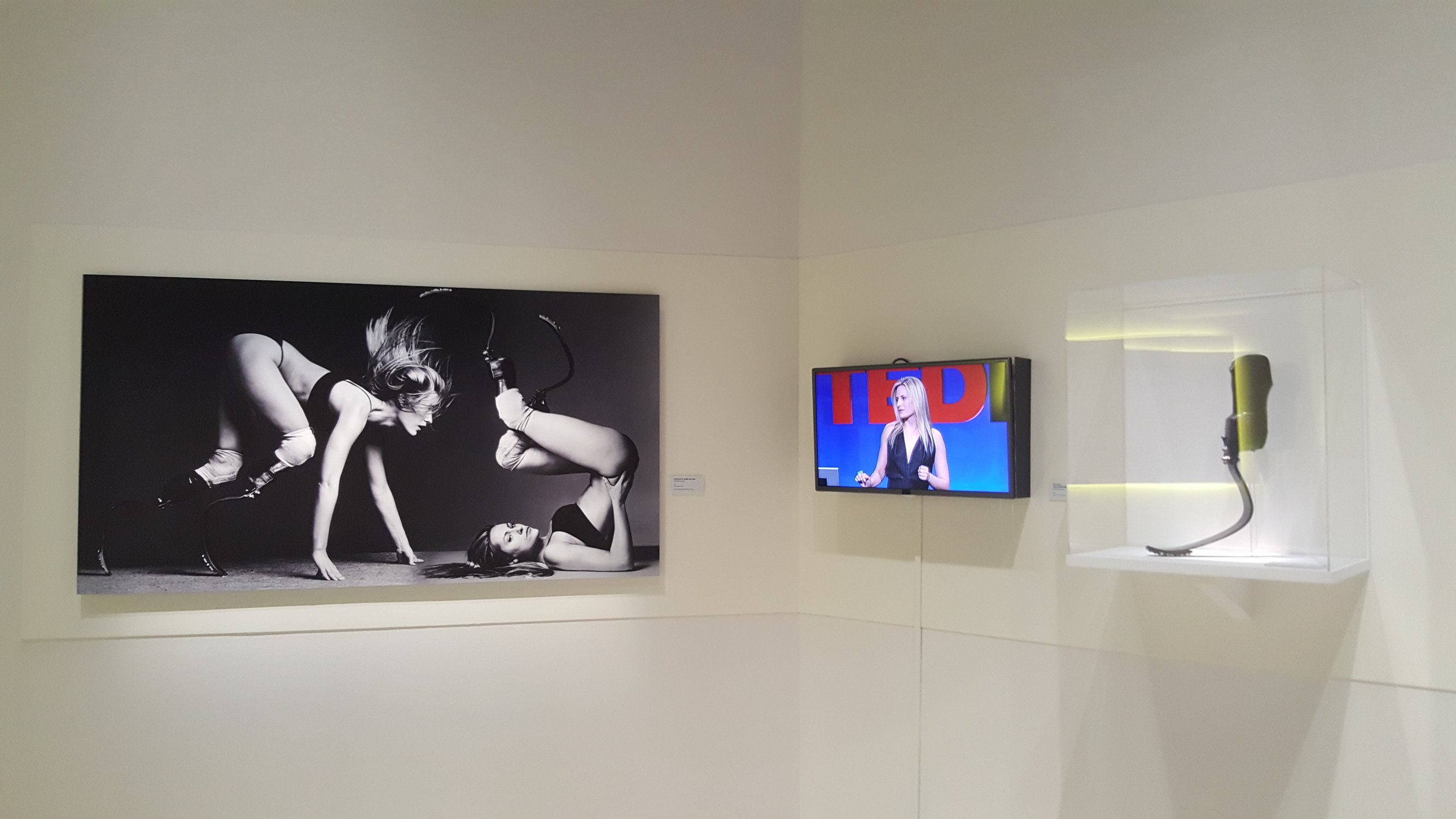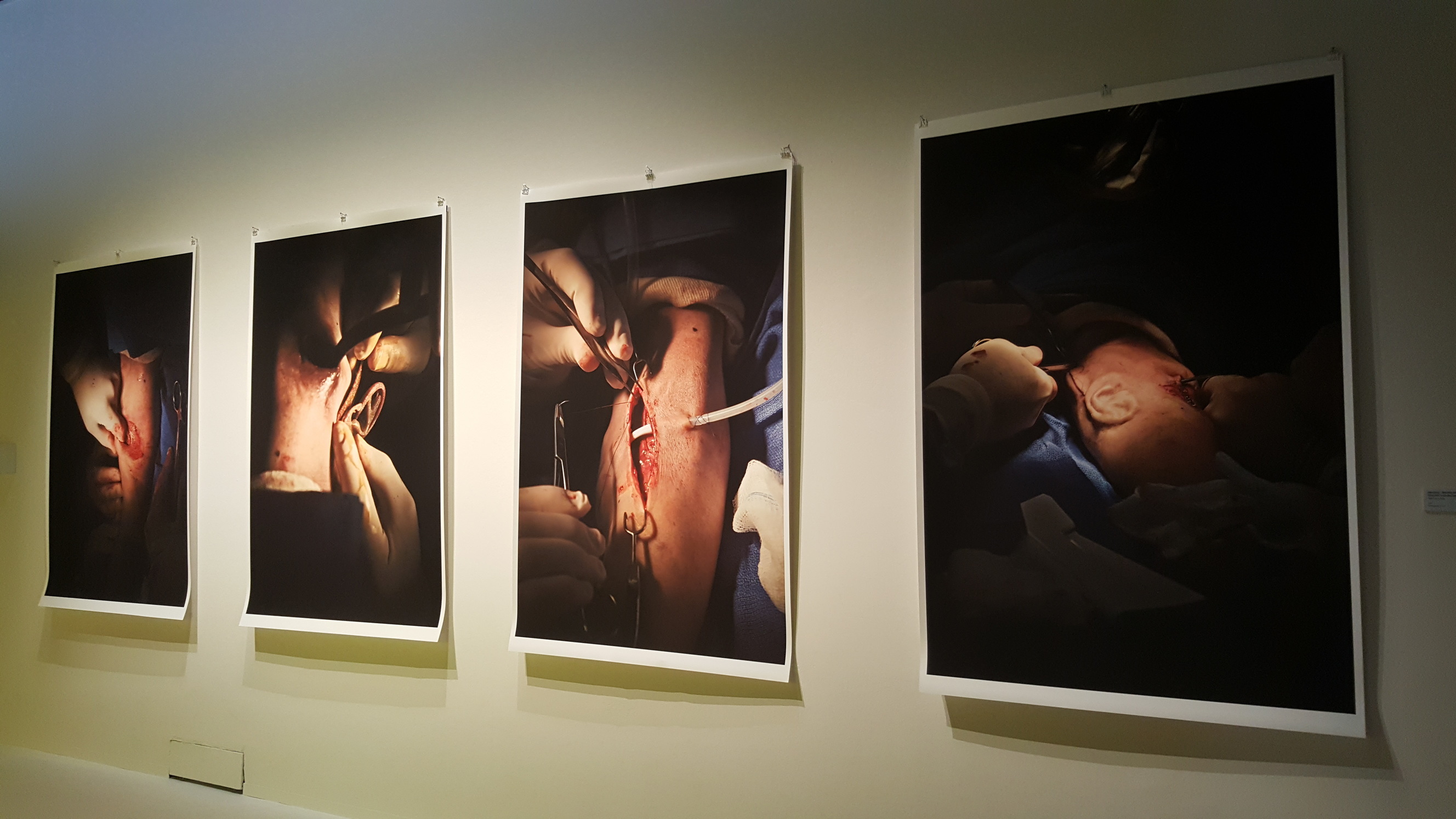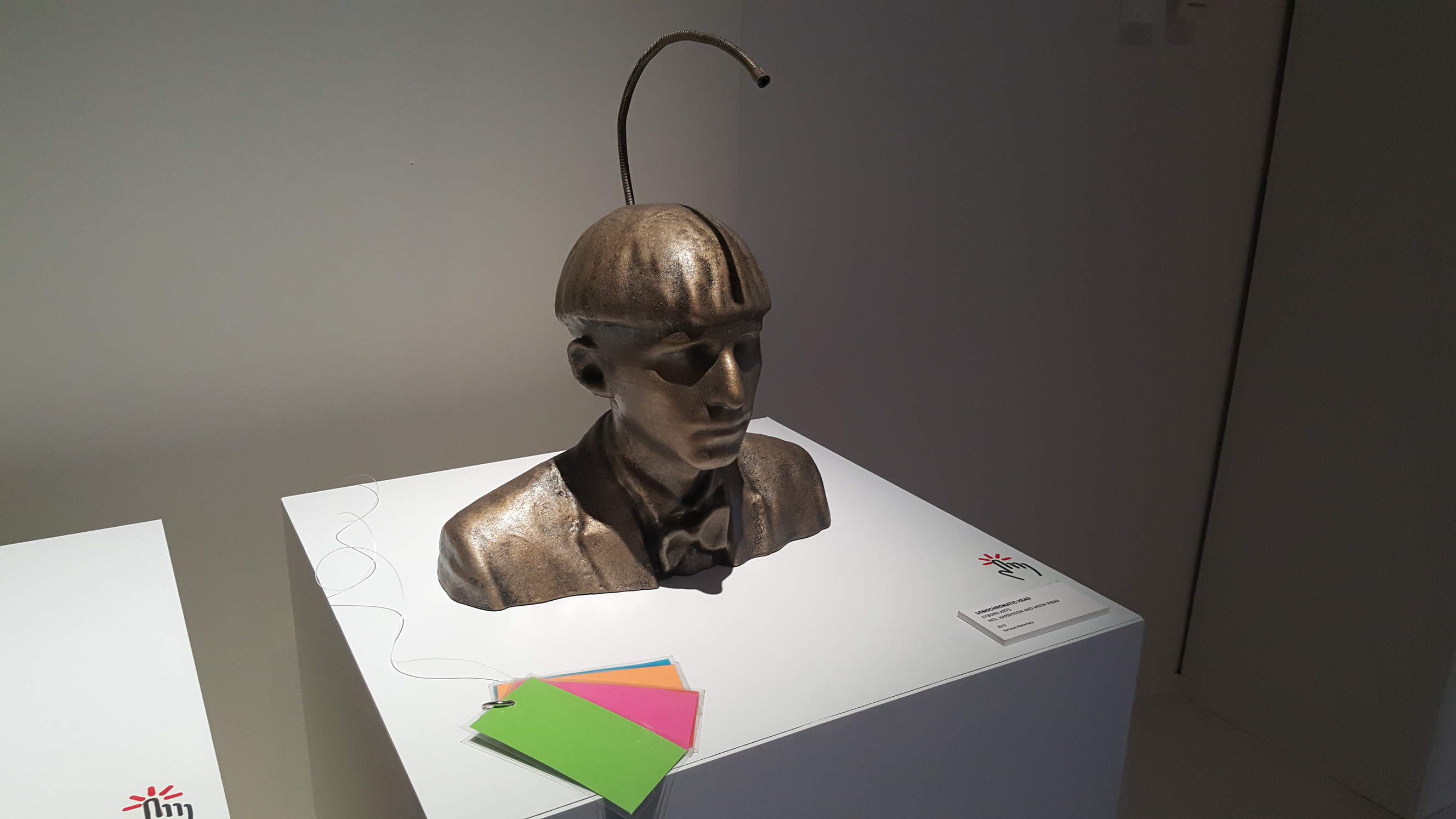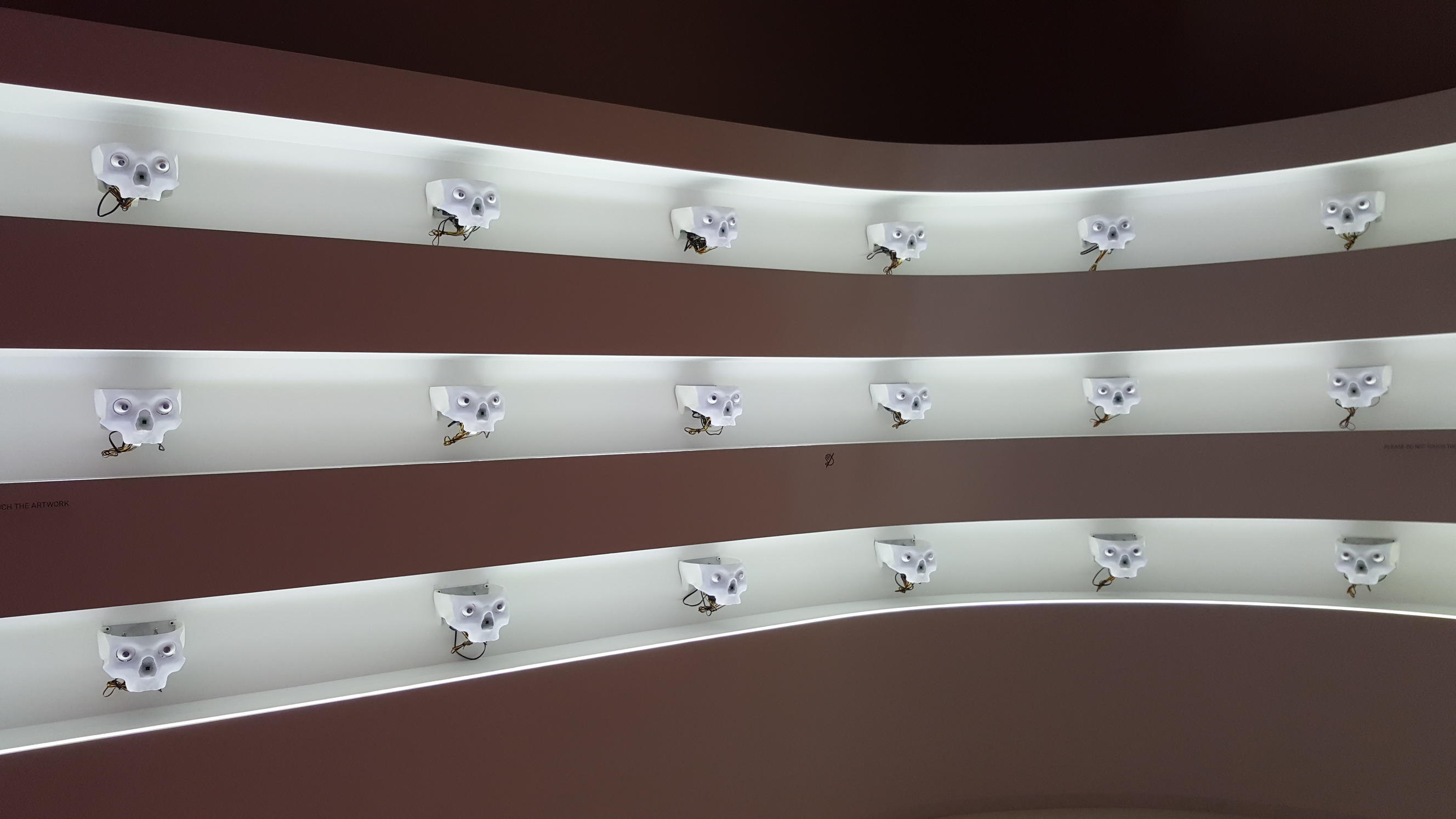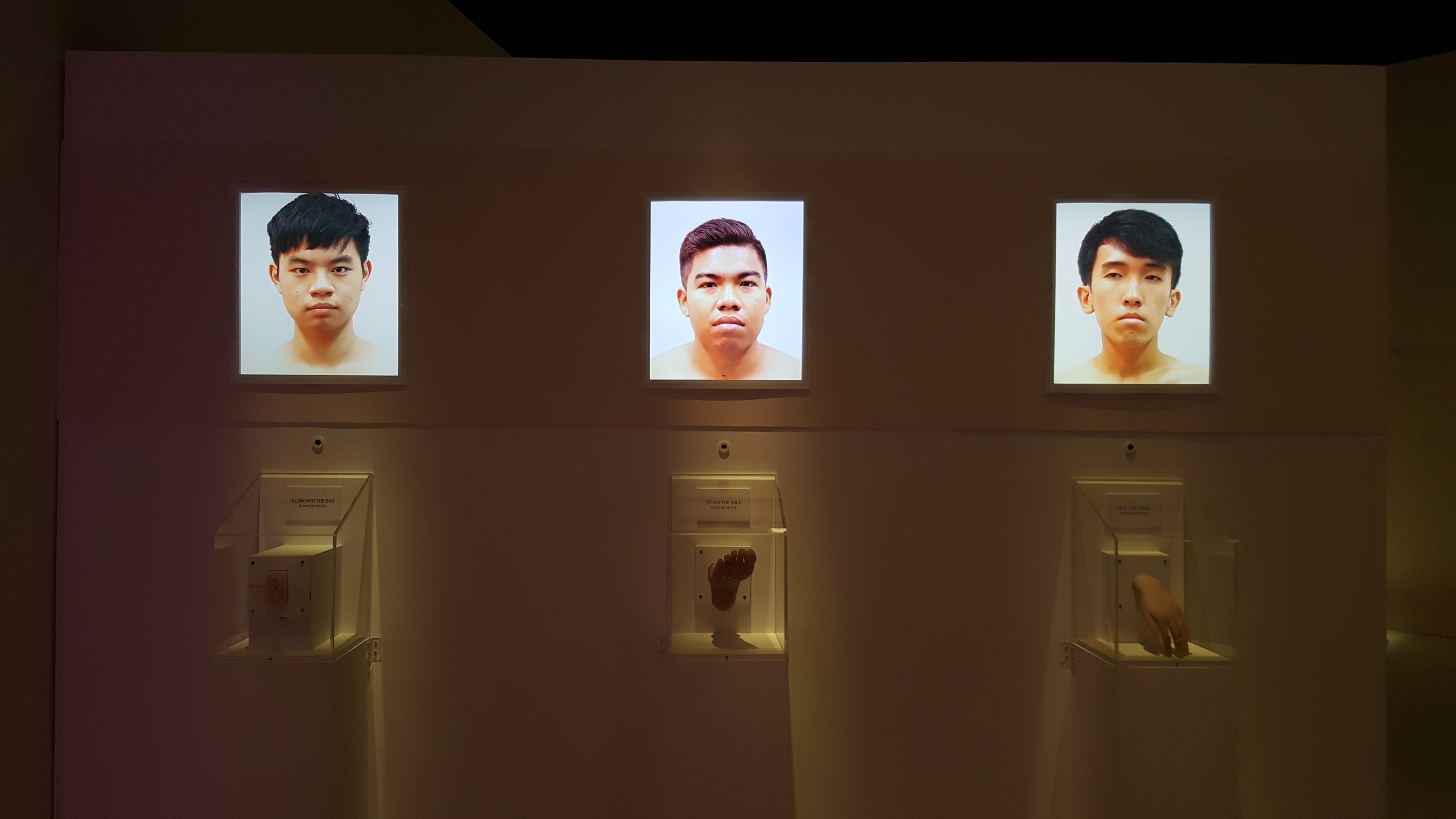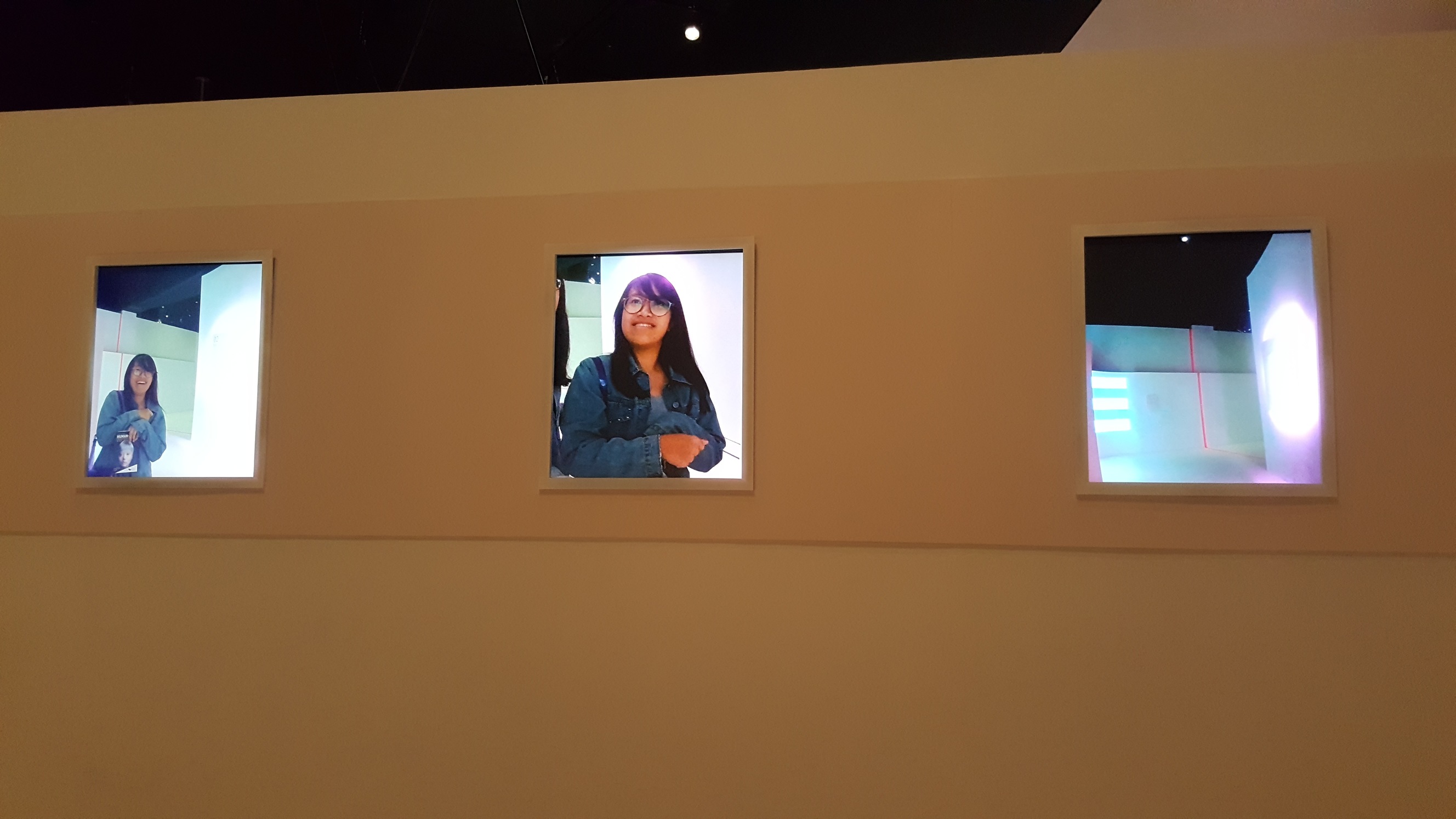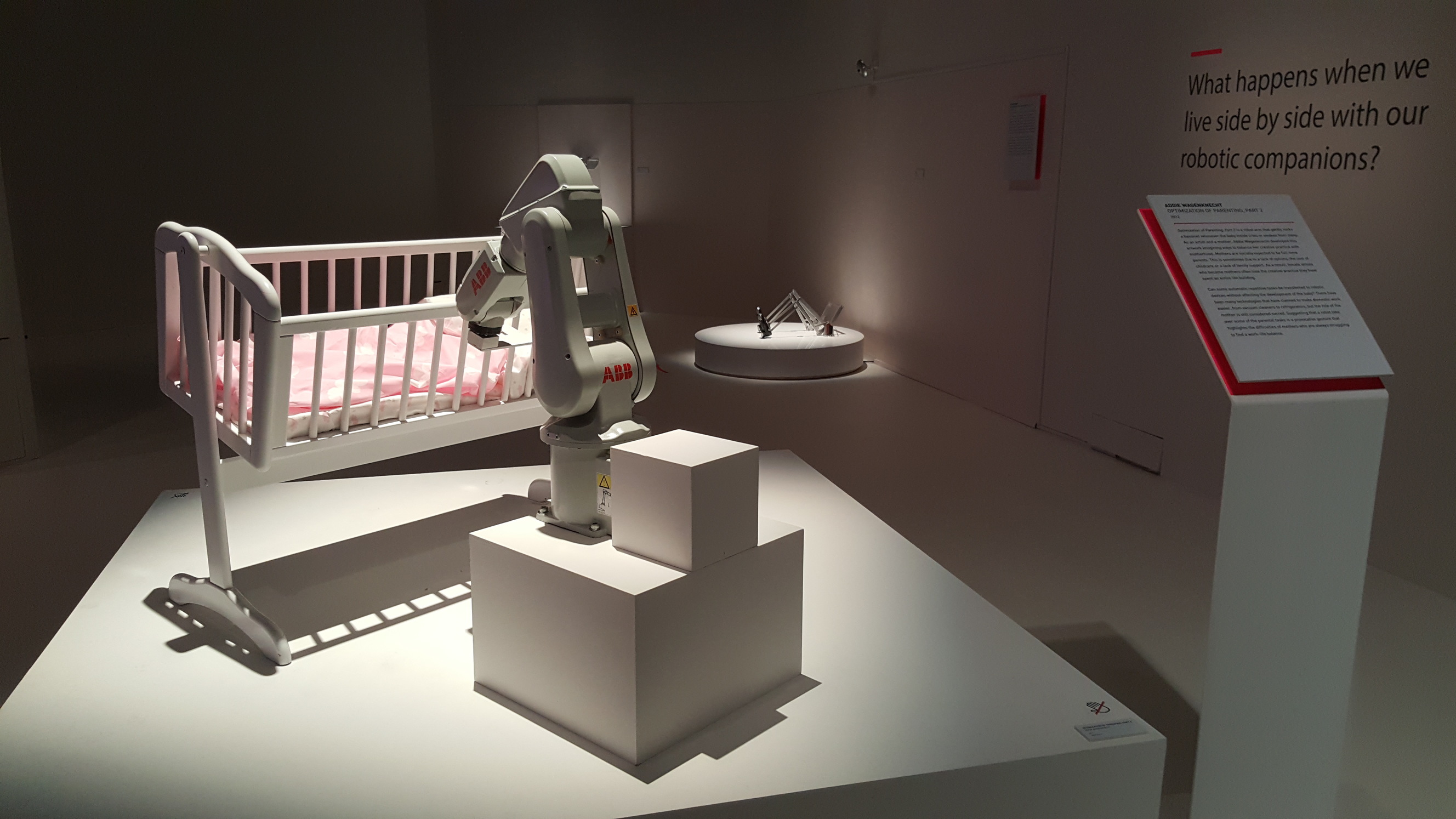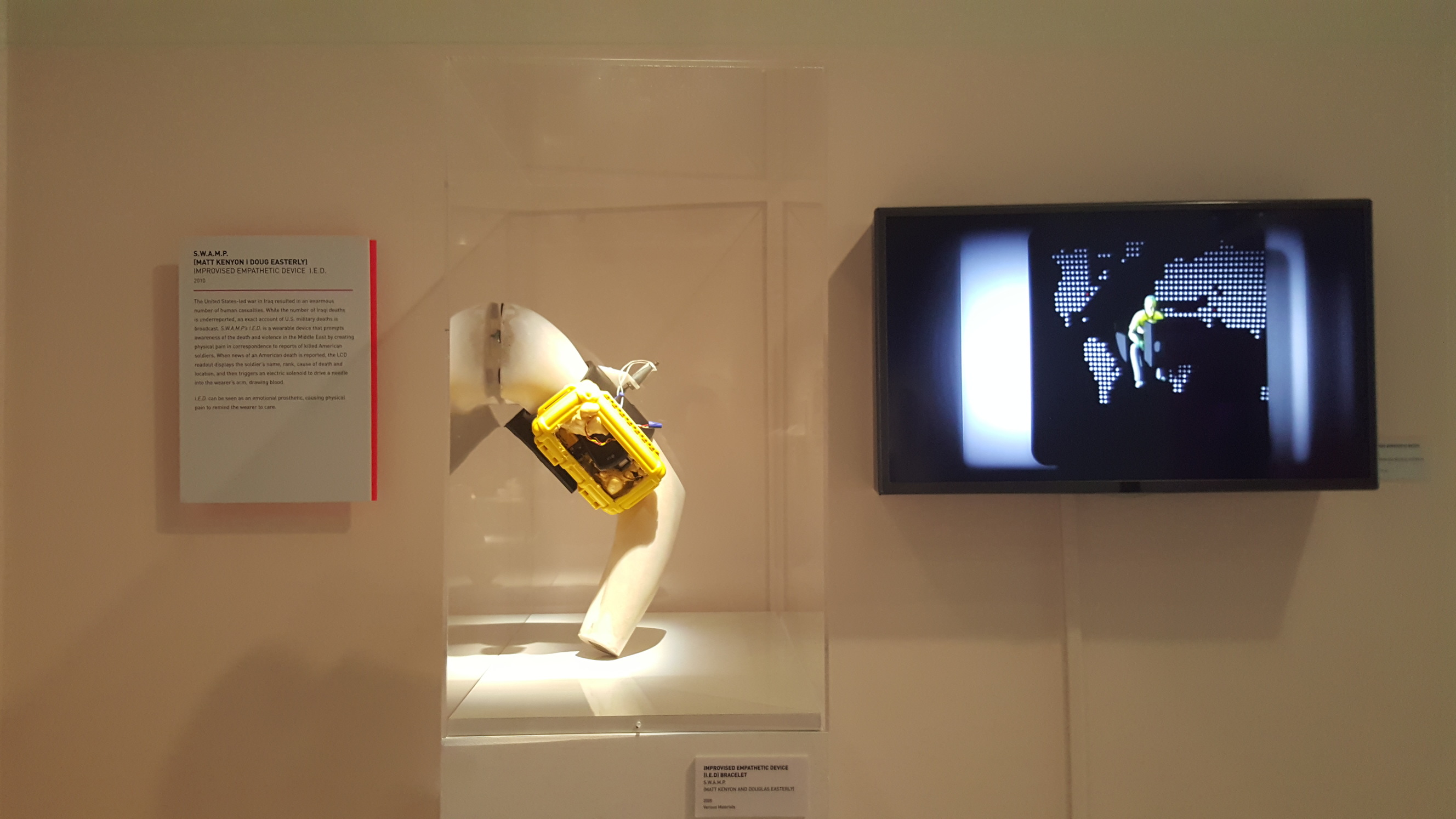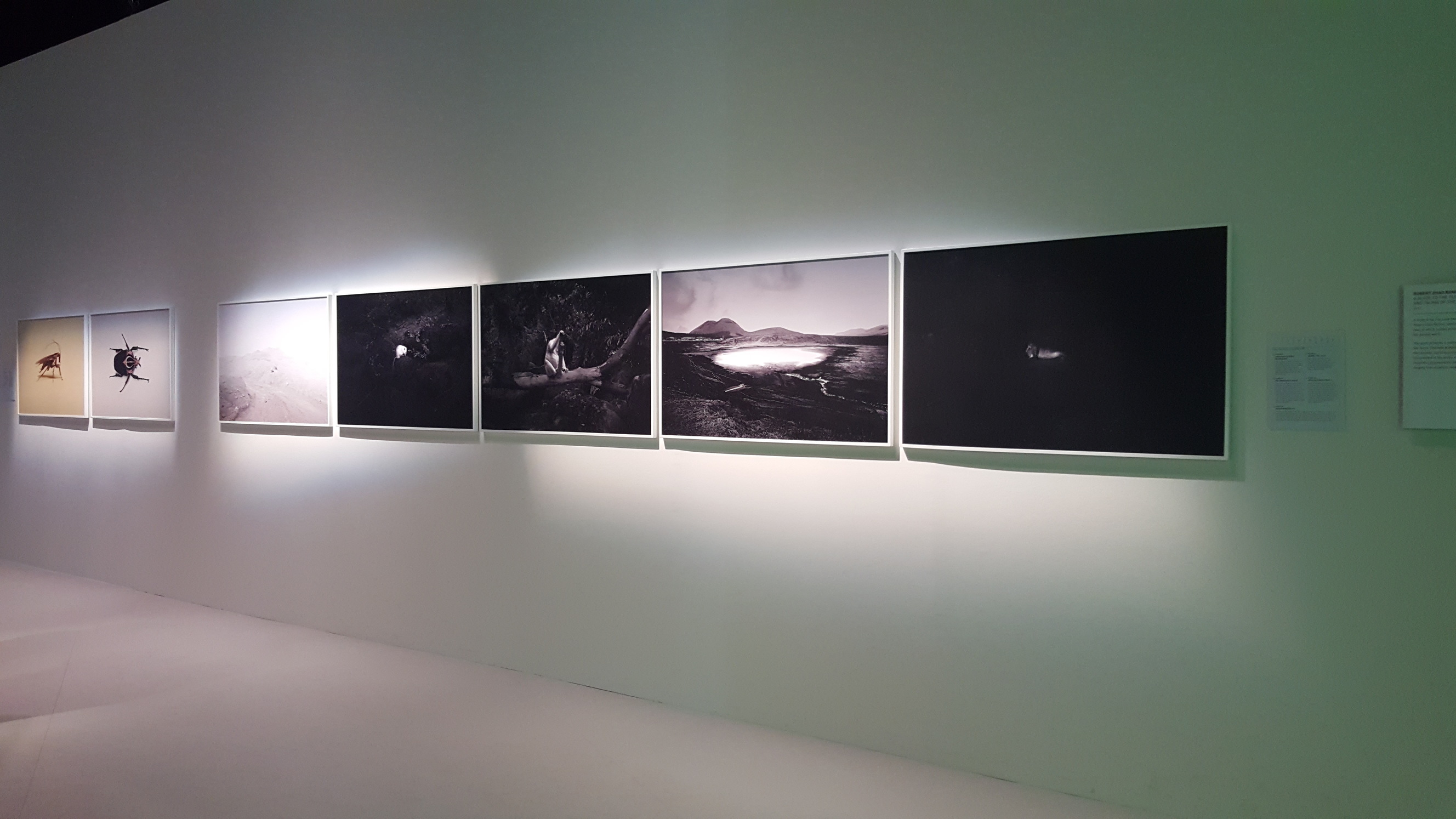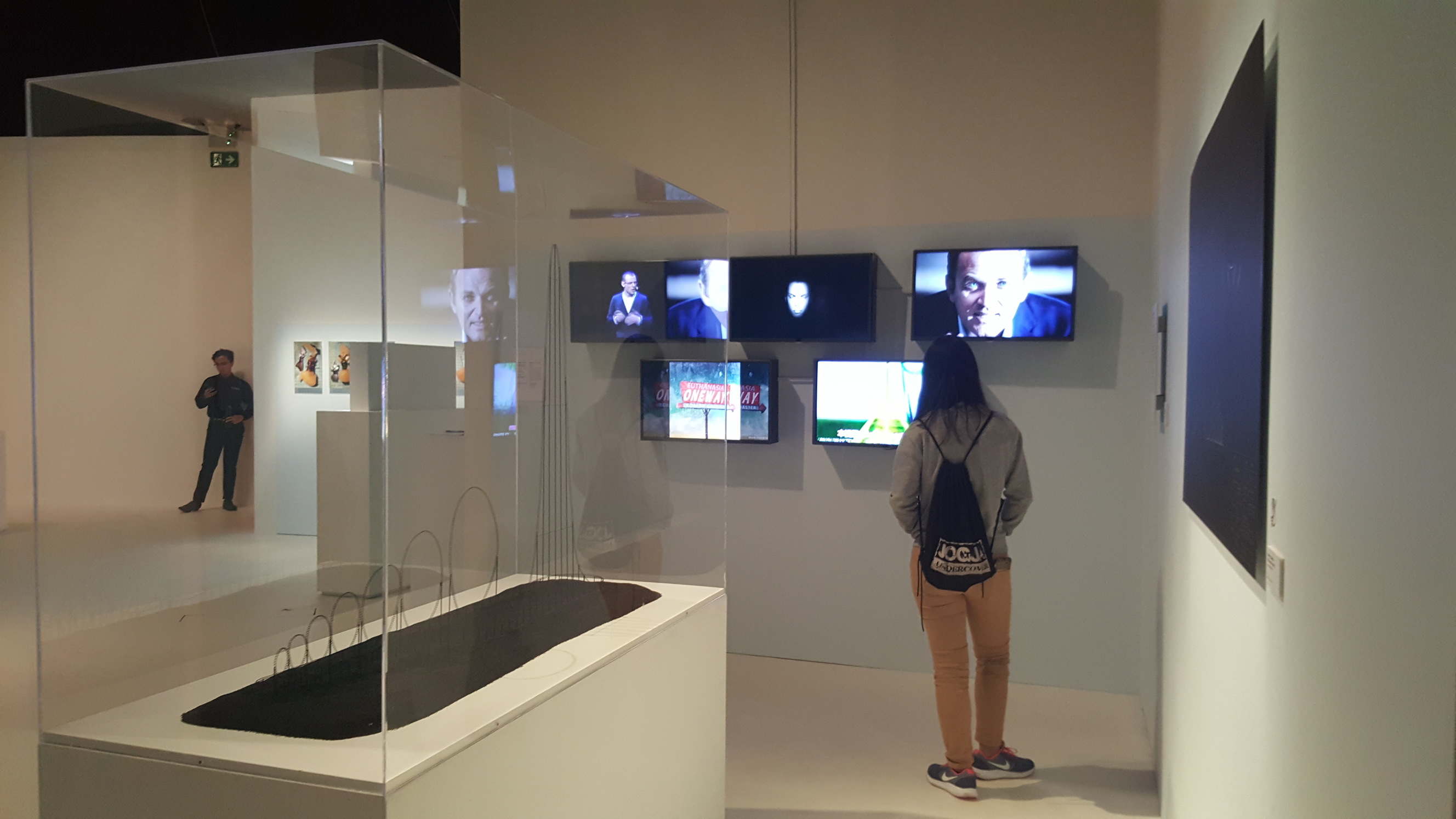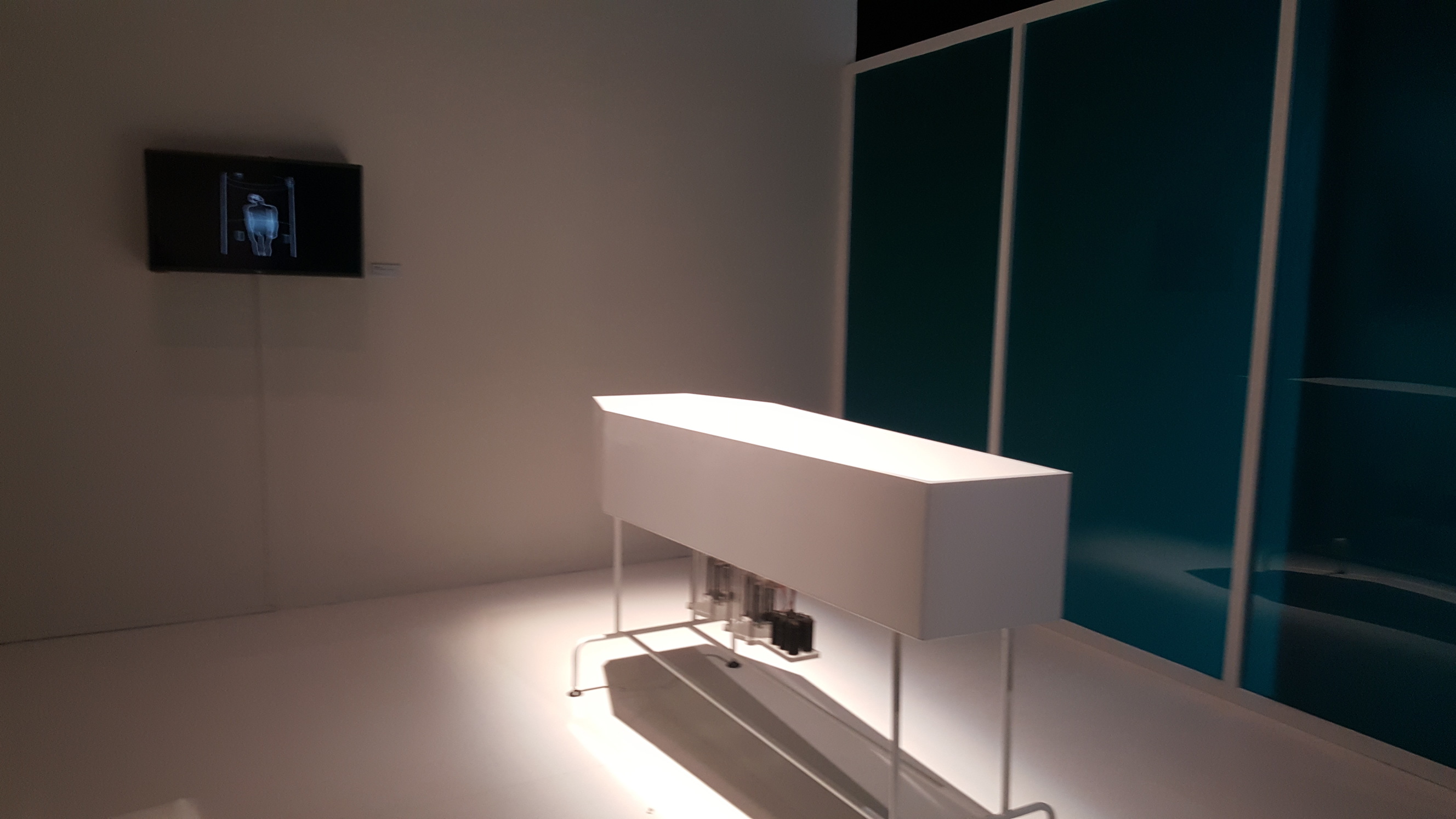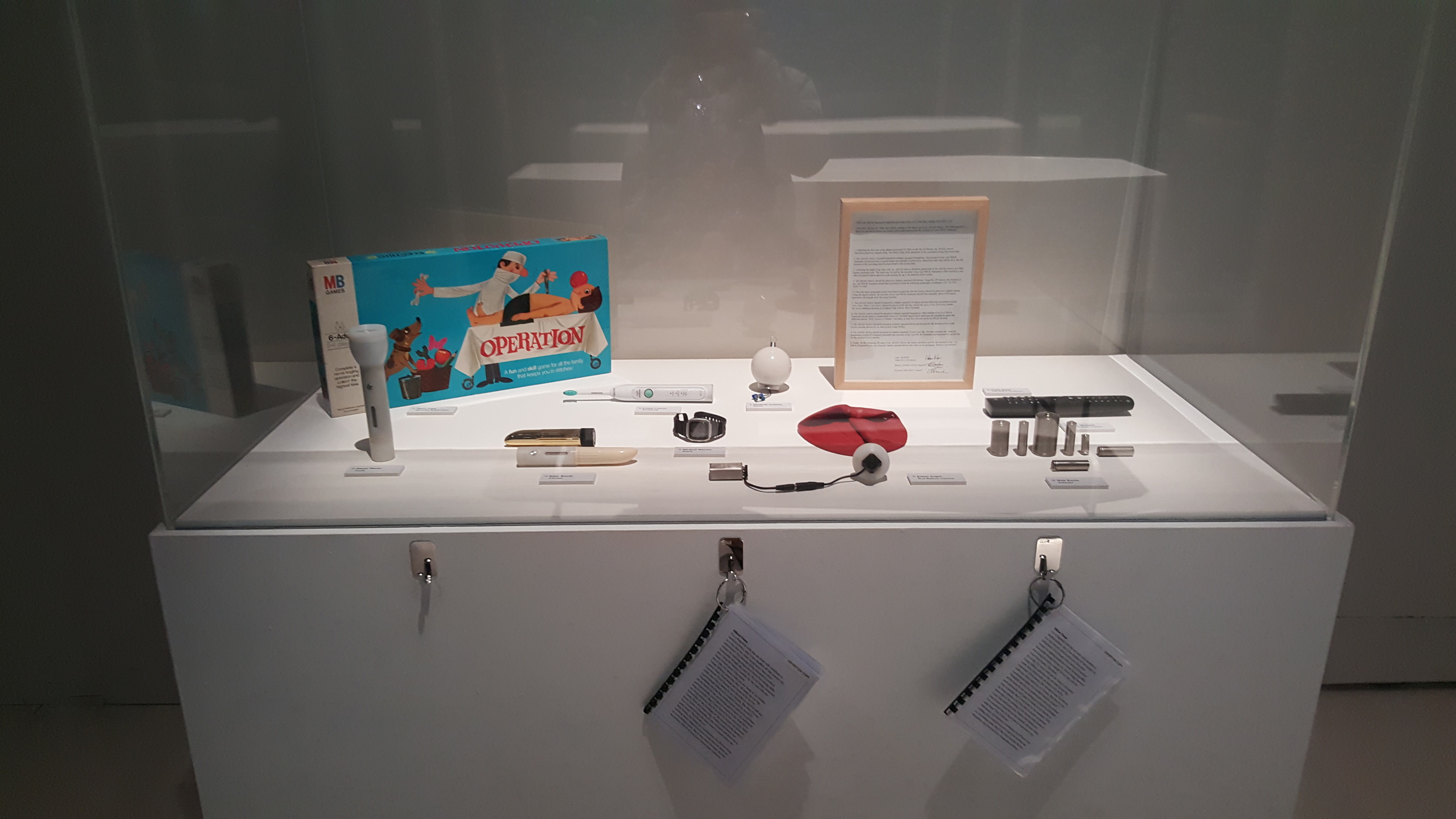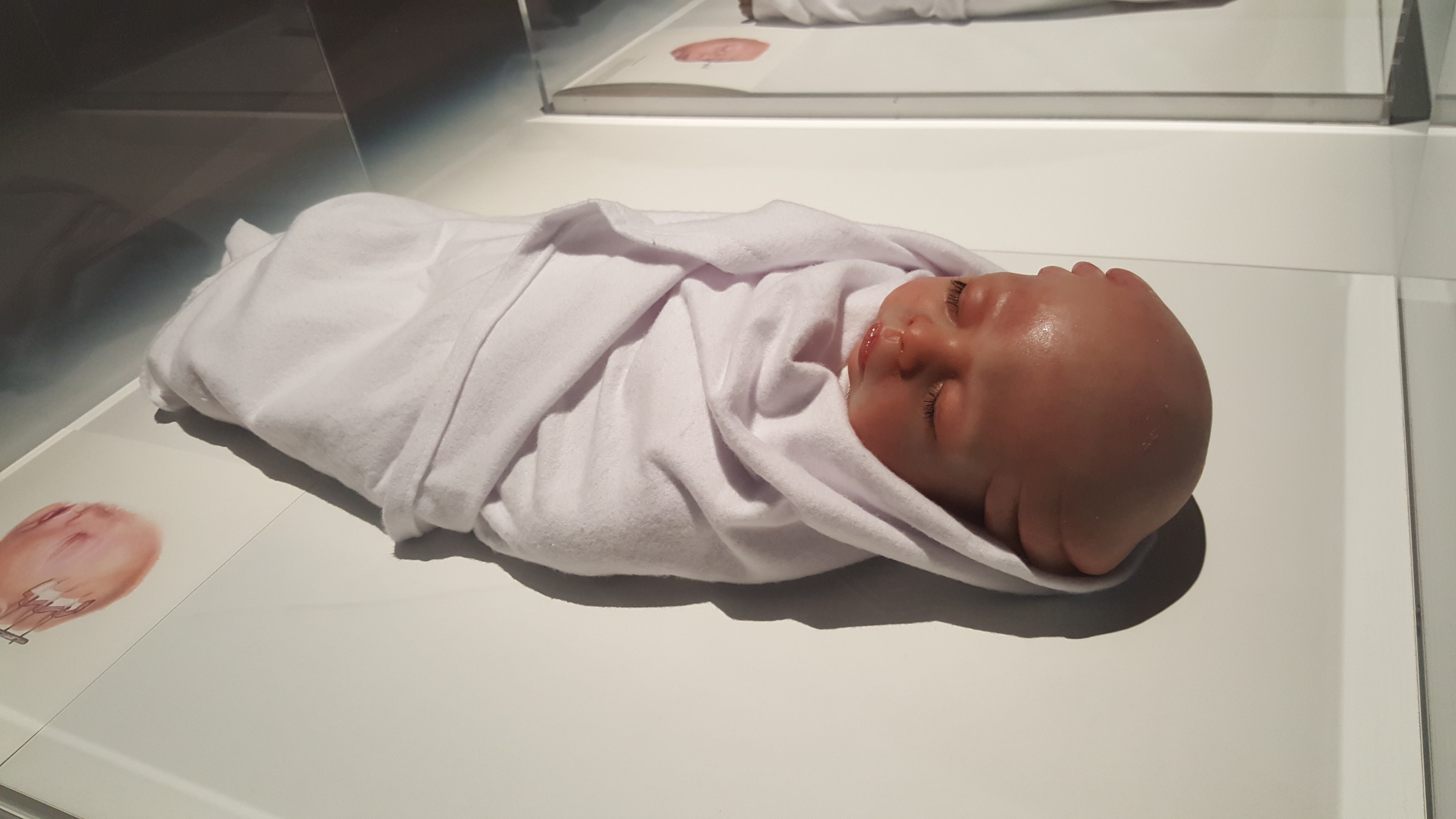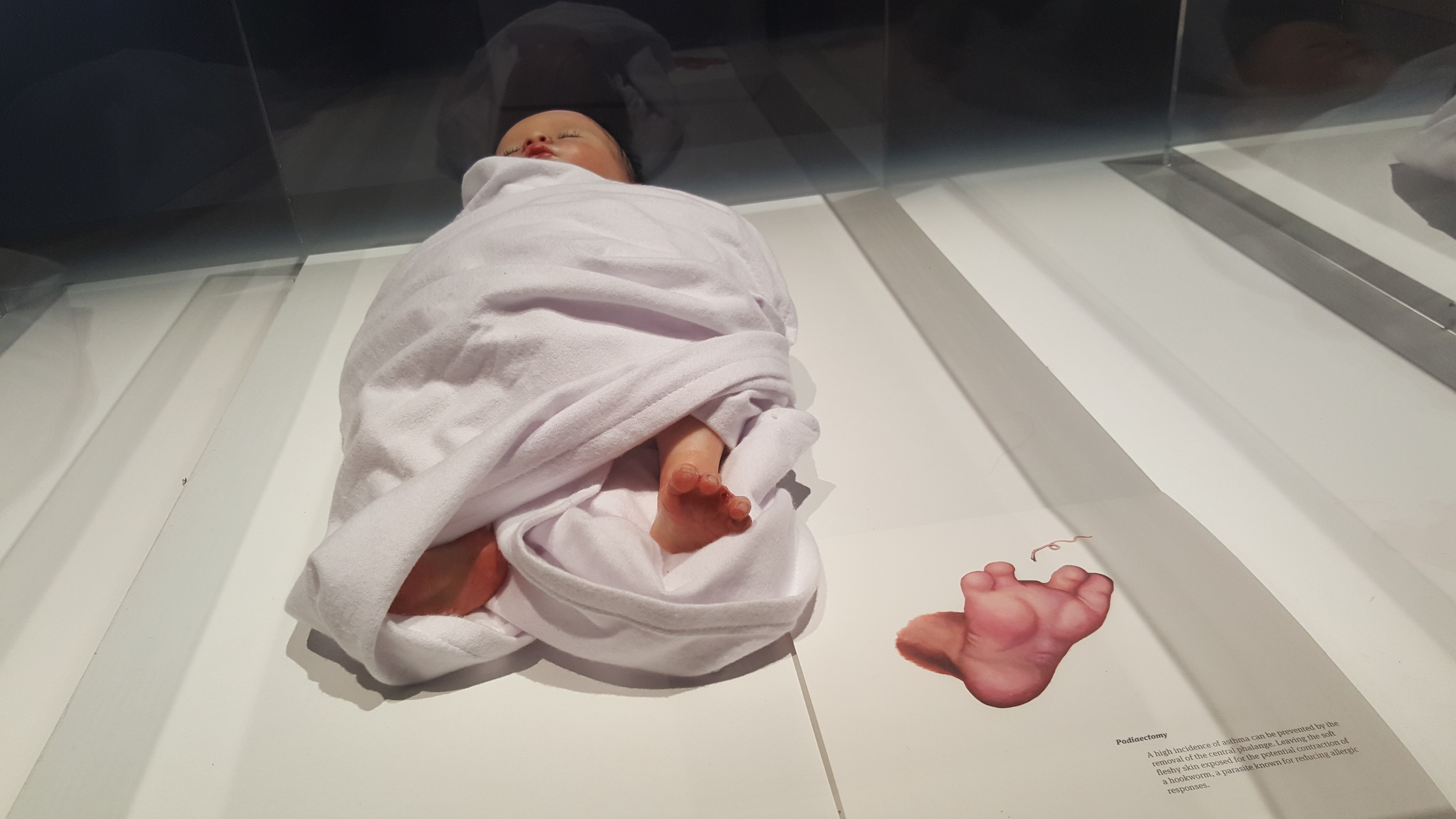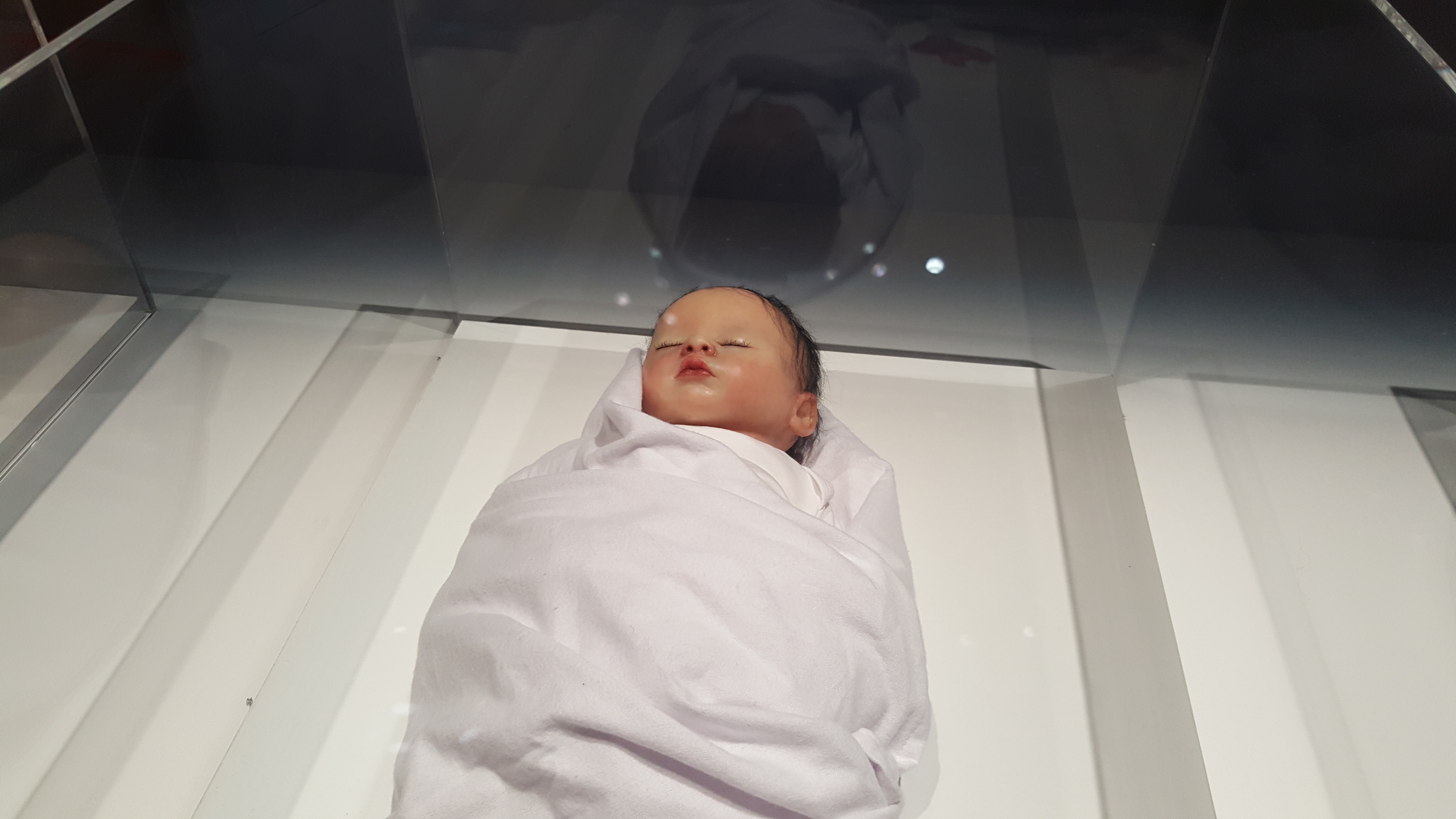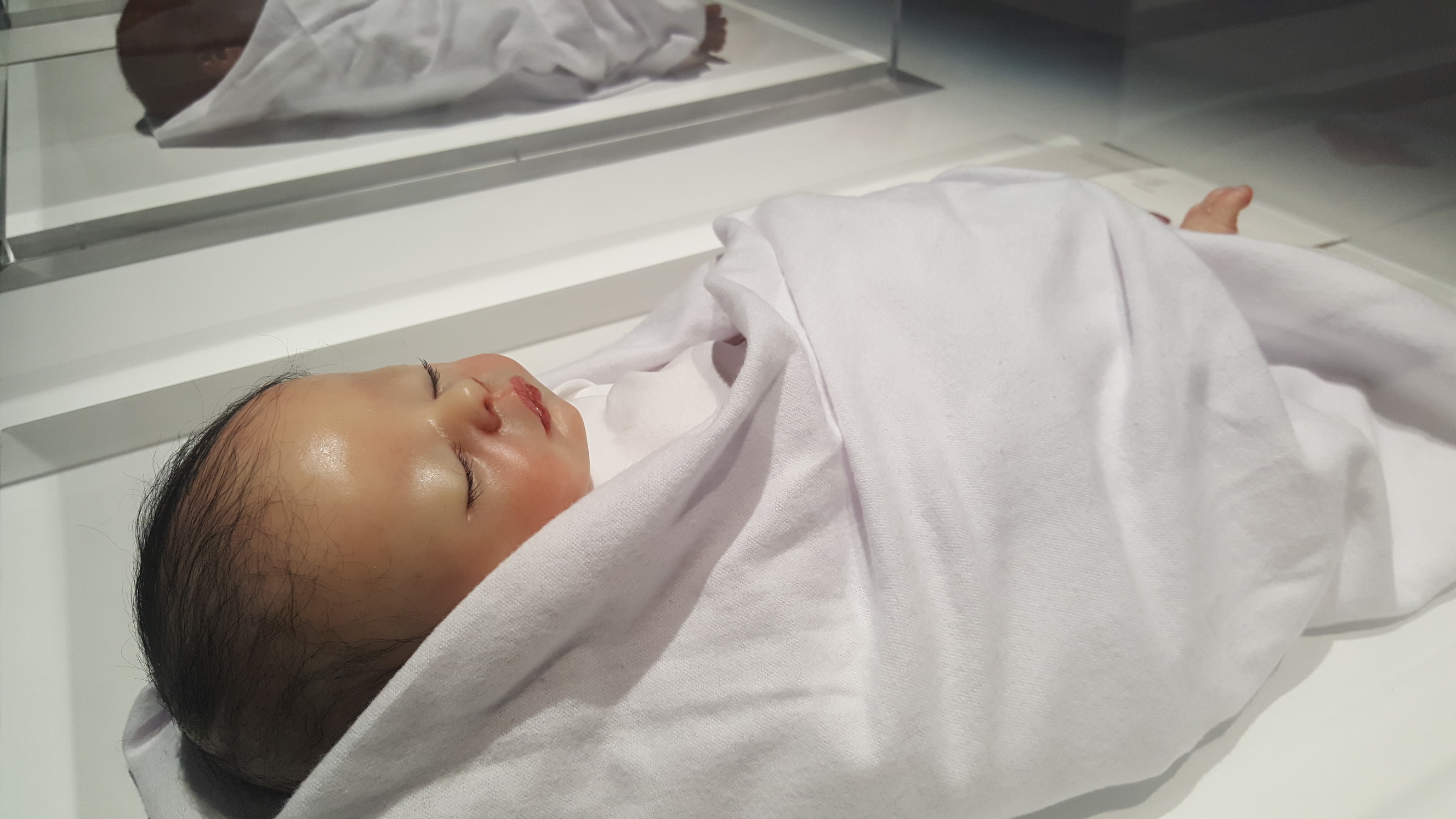Although I could not come along with the class to the exhibition, it was quite nice to enjoy browsing through the works leisurely with another friend. I was quite excited for the exhibition since I have always been interested in the idea of a dystopian future.
I’ve often wondered how the world would be like hundreds of years from now. How far would technology have merged with our daily lives? How far would technology have advanced?
When my parents were young, TV was still in black and white. They were proud to hold handphones the size of a brick, they did not have digital cameras. Yet, thin touchscreen phones, WiFi, and smart technology pervade our lives today and this is what is normal to us now.
It is weird for me to imagine a future where holograms replace screens, or even when space becomes a common holiday destination. Moving pictures and telecommunication were only dreams, witchcraft, almost, to people of the past. But they are now something so common in our lives today. And technology is constantly advancing. How far would it go?
Human+ questions this possible future. What will it be like in a future dominated by artificial intelligence, robots and augmented bodies? They are existing technology, yes, but not nearly as common, currently.
We were greeted by this quote, which made me think of how much technology has infused our lives. I did not realise this as they really have become so common.
The first work that we came across was this performance art by Stelarc, an artist from Australia, who works with his body. In this work, he is strapped onto a robot arm and his body is moved around involuntarily. Up, down, upside down and loop-the-loop.
I did not know how to feel about this. The robot whooshes and buzzes around, amplifying its dominance. Meanwhile, he is completely relaxed, smiling and might even be asleep. What is happening??? It looks like it has the potential to be a fun theme park ride though. However, now that I am writing about it, I feel that his surrender to the robot arm is similar to how we sometimes surrender ourselves to technology. We let them pervade our lives, we even depend our lives on technology; think medical stuff. This is actually a great metaphor of our relationship with technology, I realise.
The exhibition continues with a section showcasing various kinds of prosthetics.
From old-school prosthetics to fancy schmancy ones, this section shows how technology has allowed for the betterment of life for those who are missing limbs. From simply making up for a lost limb, we have improved so much that we can afford to be creative and infuse some personality into prosthetics. It has been used in fashion and many other artistic ways, which I think is great because when making art, there is a lot of meaning that we can derive from various experiences.
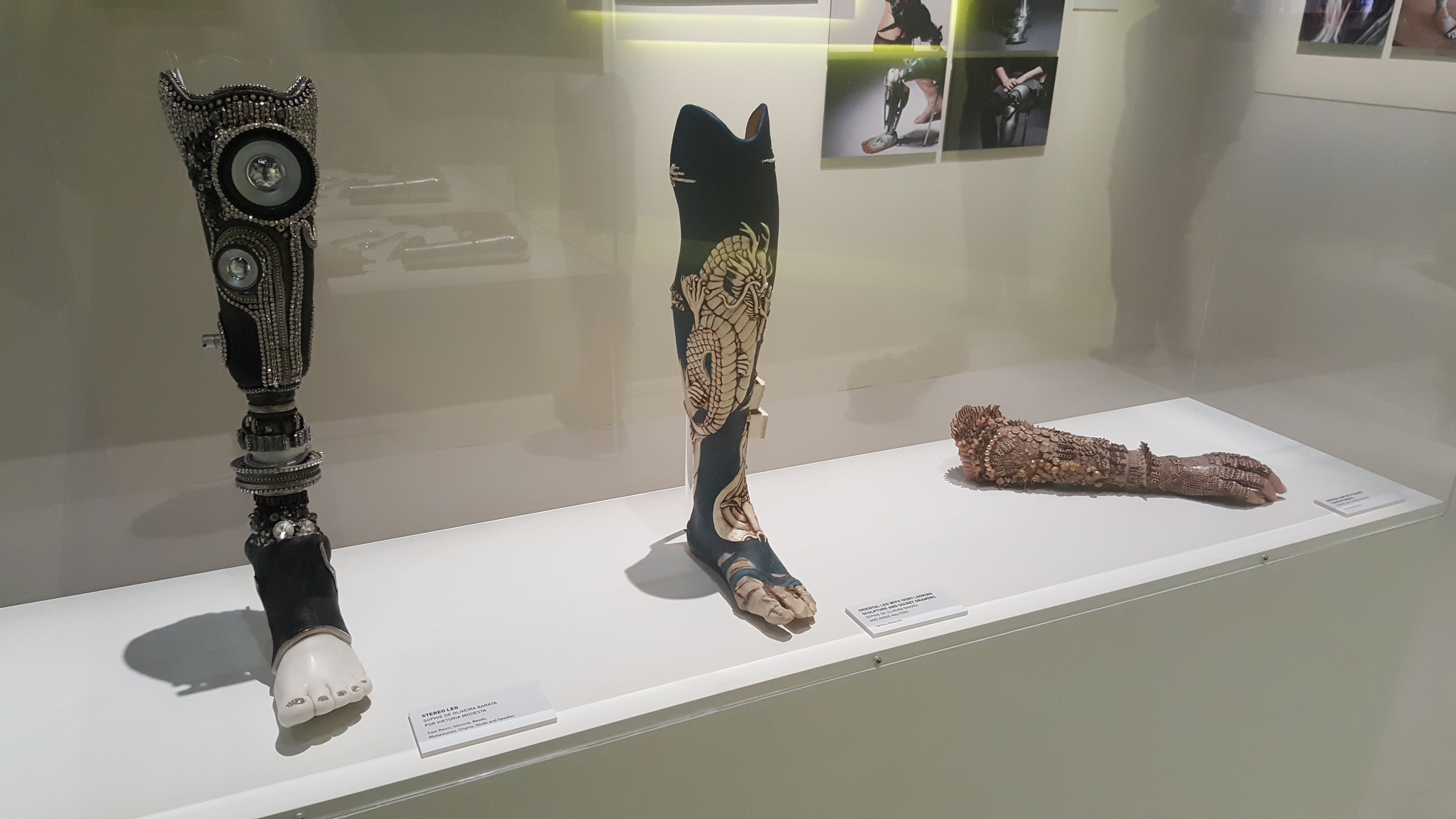
Moreover, some prosthetics were even developed to function even better than our natural bodies. This prosthetic leg, for example, was modelled after the hind leg of a cheetah. With these set of legs, she has even competed in the paralympics. What kind of modifications would you have, if you had the chance to? What if improvements can be made to our bodies, would you do it? I can’t help but ponder about the ethical controversy behind this.
Moving on, there were many other artworks and/inventions but I will be writing only about some of the standouts.
These are a set of prints of images taken by Nina Sellars from Stelarc’s extra ear surgery. Yes, the Stelarc that started the exhibition. And yes, an extra ear. On his arm. I can’t help but think of the redundancy of his actions. However, someone has to do it, right? On a side note, I do love the style of the images. The high contrast between dark and light, the theatrical lighting and styling, one might get tricked into thinking this is a staged set-up. But it is not! It was a real surgery and now the ear is a living, feeling part of Stelarc’s body. And people say getting a tattoo is a commitment?
Ah, Neil Harbisson. Our beloved colour blind cyborg. He has somewhat acquired synesthesia, since he can perceive colours through sound waves emitted by his antenna right into his brain. He has since co-founded The Cyborg Foundation, an international organisation that aims to help humans become cyborgs, defend cyborg rights and promote cyborgism as a social and artistic movement, along with Moon Ribas, who herself experiments with different cybernetics to enhance her perception of movement.
The both of them no longer only use technology as an aid in their creative processes, they have become one with technology, and these devices have become an extension of their capacities for sensation and perception.
This blows my mind how this could actually be a plausible future. Would handphones be a thing of the past? Will we be able to communicate with others simply through thinking it, through a chip implanted in our brains? A scary possibility. But possible.
Area V5 is created by Louis-Philippe Demers, an associate professor from our very own ADM. The robotic eyes follow you as you walk by. It is said to comment on the Uncanny Valley, which is a pseudo-scientific hypothesis that tries to justify the uneasy feeling humans experience with robotic agents. I think that this work is really cool and it does bring across the idea of becoming uncomfortable with interaction with robots.
The next work is called TEASE, an interactive installation by students from Nanyang Polytechnic’s School of Interactive & Digital Media.
Mechanical body parts are “attached” to displays of people. It seems that by touching these body parts, a reaction will be shown by the human displays. We are however, free to interact these body parts in any way we want. We can tickle it, scratch it, squeeze it. Although it was considerably difficult to get any reaction from these digital humans, it was quite fun to try to get reactions. When it was time to move on, we realised there was another part to this work!
Behind the wall, there were three screens in relation to each of the screens at the front! These were recordings of us when we were teasing the body parts, lagged quite a while. This came as a surprise and I felt a hint of embarrassment as I find out what I look like when I’m trying to get a response.
I really liked this work as I could play around with it and the idea behind it was quite clear. If the sensors worked well, it would have been really fun to see the different reactions of the humans on screen.
This was another example that shows how technology has become a huge part of our lives. While the artist received criticism, saying that taking care of a child is a mother’s duty, and that a baby needs our physical care, I don’t think that the artist is fully wrong because she was only trying to find a way to cope with the business of raising a child and normal life. It can be overwhelming and parents can have no sleep at all, even though they are still expected to work or continue on with their lives as per normal. However, the reality is that babies do take up a lot of time and it can be tiring. If it is safe and can get mommy a better night’s sleep, then why not, right? Just my two cents.
This is a piece which I found quite meaningful. Called an improvised empathetic device (I.E.D.), the wearable device inflicts physical pain to the wearer by driving a needle to the wearer’s arm every time an American soldier’s death is reported, with the LCD displaying details of the soldier and his/her death. This is an interesting way to remind people of mortality and empathy. Oftentimes when we hear of someone’s death, it is not easy for us to feel empathetic when we don’t know the person. However, this device reminds the wearer to care. Somehow we share the same physical pain, and this improves our ability to empathise.
Here is a series of photographs by another ADM professor, Robert Zhao Renhui!
Here on the left we can see a model of the Euthanasia Coaster, a roller coaster designed to take your life. It is theoretical though, and I don’t think that it will be constructed, at least not anytime soon, but I have to admit that it is a very intriguing concept. This isn’t the first time I’ve heard of it, I have actually read about this somewhere else. But it was great to see the model and look at the designs in real life.
As a roller coaster enthusiast, I was naturally attracted to this work. The idea was that if we could take our lives in a fun way, why not? For those seeking for a last thrill in life, this may be the answer. However, the roller coaster does not take your life away that quickly, which, I think to myself, might be a little inconvenient as your brain gets shaken in the skull so hardly you would pass out and slowly die (at least this is my understanding of how it works). There is a reason the coaster is only theoretical. Still, an interesting concept.
This next work also caught my eye since I like to think of how we can maximise harvesting energy, since there is a possibility that our natural sources would soon deplete. I find myself thinking, what if the floor can harvest energy from our footsteps, wouldn’t that be great, and other things.
This coffin converts our corpse into bio-fuel that in the future, is contained in a battery, and we can choose for it to power anything that we would like. We could choose to power a watch, a flashlight, a toy, you name it. Part of the work is a list of responses from different people. What would they want to power, and why? I find that the items they chose were in a way an extension to their identities and personalities, which was fascinating.
The last work that I am going to write about is about genetic engineering. These realistic models of babies show a future where gene modification is prevalent. However, very physical changes can be seen. From gill-looking extra orifices to an amputated toe, these modifications are supposedly made to improve the quality of life for these babies.
This of course, raises ethical questions. What draws the boundary between acceptable and unethical? It has been done today. It seems acceptable when what we are trying to do is prevent the baby from being born with a crippling disease, but what about choosing a baby’s gender or giving the baby a sharper nose, or blue-coloured eyes? Would that be ethical or would that be called playing God? It will be interesting to see how genetic engineering’s future folds out.
There were areas where you could try out virtual reality and also meet-and-greet sessions with Nadia, a robot developed by NTU, but sadly I did not come during available times. However, overall, I enjoyed the exhibition, and the topics explored in this exhibition opened my mind and raised questions in my head. How else can we perceive the future through art?
